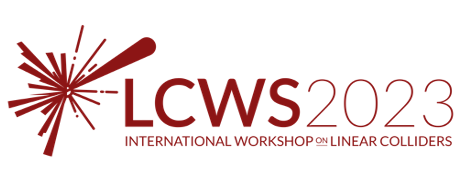Speaker
Description
For the ATLAS Muon Spectrometer, the alignment of the inner, middle and outer tracking detectors is crucial for the precise measurement of the muon momentum. This alignment is monitored by fixing a back-illuminated coded mask on the inner detector, a lens on the middle detector, and an image pixel sensor on the outer detector. An image of the mask is projected, by the lens, onto the image pixel sensor. The alignment of the three detectors can be obtained by analysing the image data, and track sagittas can be corrected for [1]. Since 2005, in ATLAS, some 8000 Red Alignment Systems Nikhef (Rasnik) are flawlessly operational.
Rasnik is a 3-point alignment system. Multiple point ‘leap frog’ alignment can realised by equipping each point with a chainplate carrying closely spaced a mask, a lens and an image sensor, such that any set of three (identical) chainplates in a row form a Rasnik system. With n chainplates, the alignment of any plate with respect to the outer two plates, can be recorded.
For the alignment of the 2100 accelerator structures of the C3 project, the system should be able to operate in vacuum and in an environment of liquid nitrogen (LN2). Given the index of refraction of LN2 (n = 1.20), lenses can’t be applied. This problem is solved by replacing the back-illuminated coded mask by a monochromatic light source emitting spherical waves, and the lens by a zone plate. This results in a well-known Fraunhofer diffraction pattern as image: the position of the pattern on the sensor defines the alignment of three points as before. Here, each chainplate will be equipped with a VCSEL laser and an image pixel sensor, and the zone plate is made by cutting out a hole, or better, an optimised transparent pattern [2].
[1] M. Beker, et al., The Rasnik 3-point optical alignment system,
J. Instrum. 14 (08) (2019) P08010,
http://dx.doi.org/10.1088/1748-0221/14/08/P08010.
[2] H. van der Graaf, et al., The ultimate performance of the Rasnik 3-point alignment system
Nuclear Inst. and Methods in Physics Research, A 1050 (2023) 168160
https://doi.org/10.1016/j.nima.2023.168160



